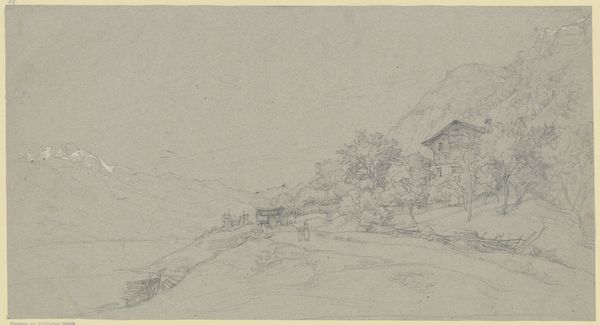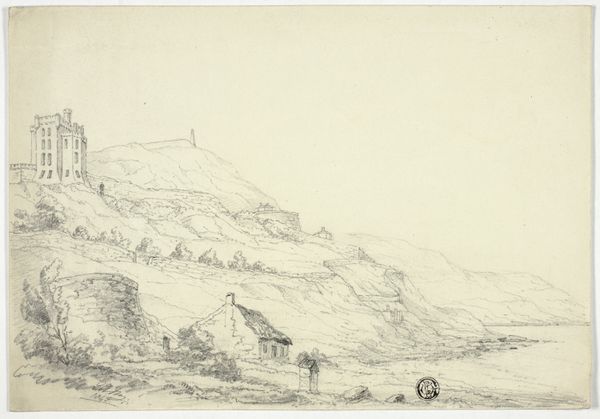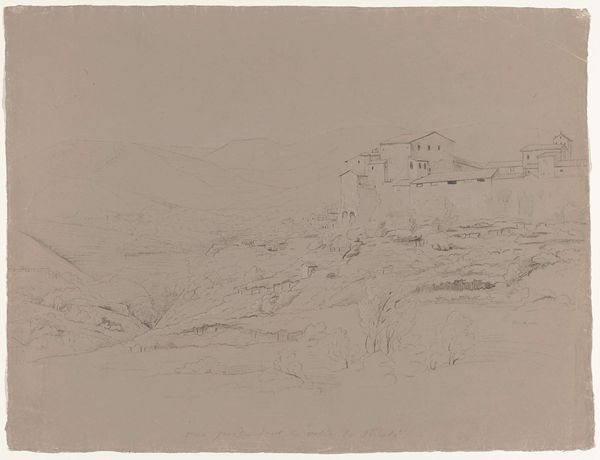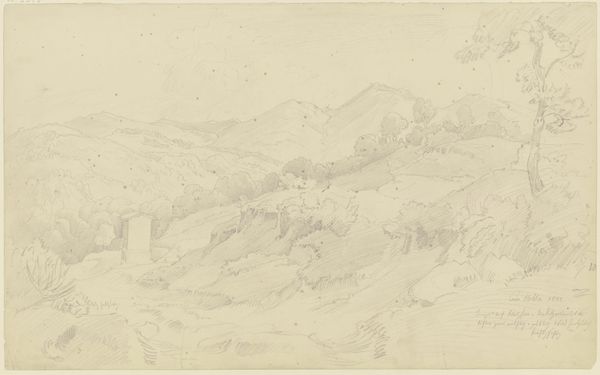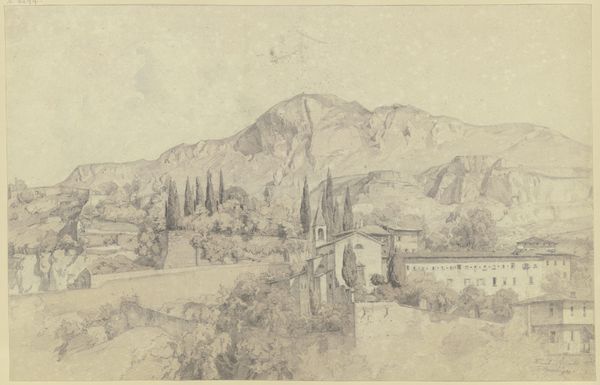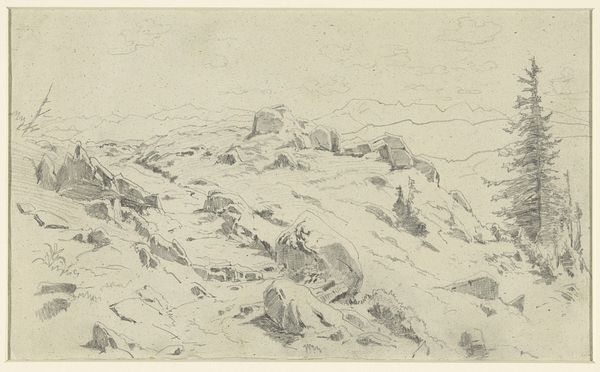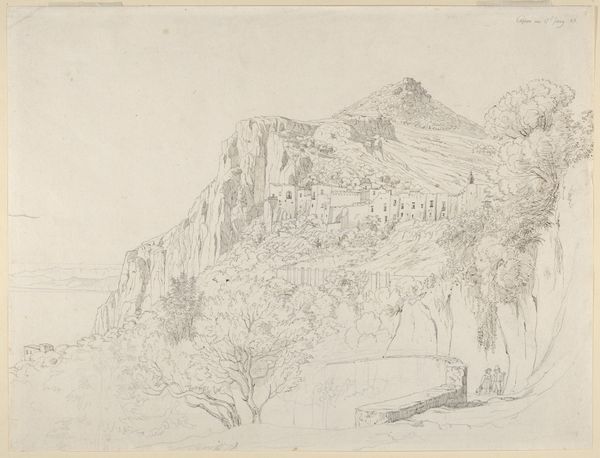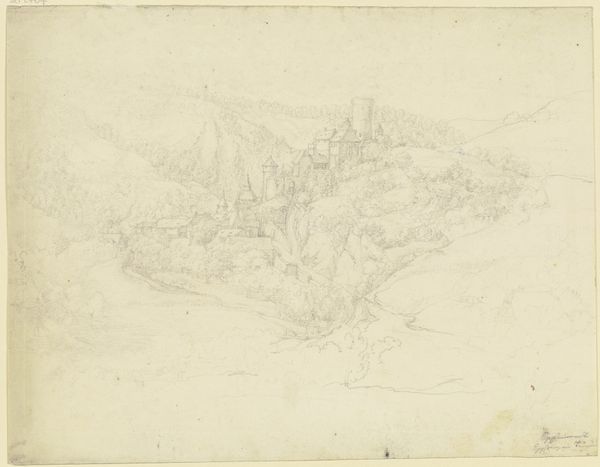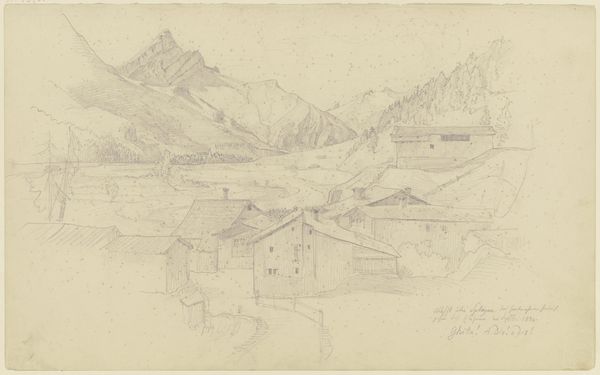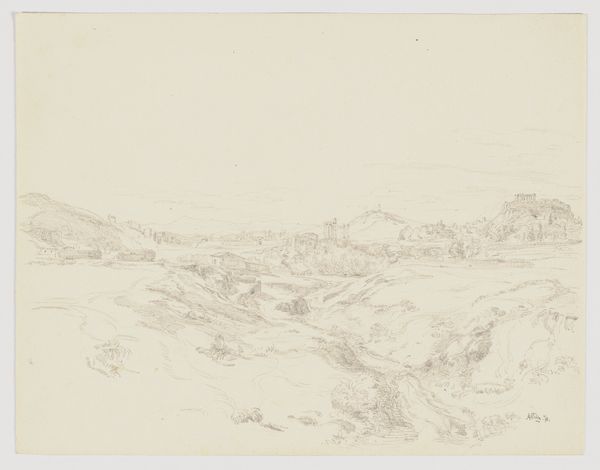
Copyright: Public Domain
Editor: This is "View on Subiaco," a drawing created around 1854 by Friedrich Karl Hausmann, using pencil and chalk. It’s so delicately rendered, almost ghostly, but grounded by the architectural details. What's your take on this landscape? Curator: Focusing on the materials, Hausmann's choice of pencil and chalk, common and readily available, speaks to the democratizing tendencies within Romanticism. We must ask ourselves, what were the means of artistic production during this period and who had access to them? The use of these accessible media challenges a solely "high art" perspective, doesn't it? Editor: That’s an interesting point. It does make you consider the artist’s process and accessibility. Does the drawing's romantic style conflict with that material accessibility? Curator: Not at all. Romanticism often glorified nature and the common person. By utilizing relatively inexpensive materials like pencil and chalk, Hausmann subtly acknowledges the labor and materiality inherent in representing a picturesque scene. It wasn't oil paint for wealthy patrons. How does this challenge established academic traditions? Editor: I suppose it elevates the everyday, both in subject and materials. It makes me think about who this drawing was actually for. Was it practice for something larger, a study, or a work meant to stand alone? Curator: Exactly. And what implications would the intended audience and social context of display have? Furthermore, it also opens the discourse up about mass production in fine art! Were there several versions sold? Editor: This has really made me consider landscape art and art production from a totally different angle! Thanks for pointing all that out. Curator: Of course! It’s always fruitful to analyze the tangible realities shaping artistic creation.
Comments
No comments
Be the first to comment and join the conversation on the ultimate creative platform.
